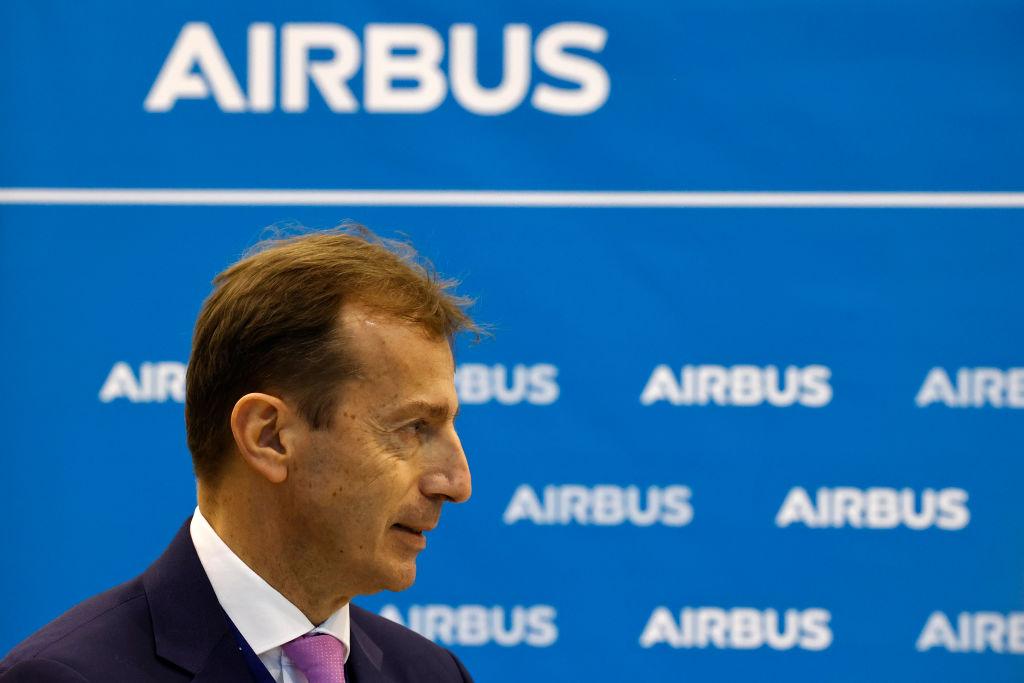
LYON—A strong market for commercial aircraft continues to validate planned production rate increases, but supply chain issues remain the main challenge, according to Airbus CEO Guillaume Faury.
The net order intake accelerated in the third quarter to reach 647—up from 259 in the first half of 2022. Crucial in meeting customer demand is the A321neo, which now accounts for more than 60% of A320neo family orders. The A321neo, positioned at the juncture of single-aisle and twin-aisle capacity, answers a need for more seats at limited unit cost. The model appeals to ULCCs like Frontier Airlines, which took delivery of its first 240-seat A321neo in September.
Airbus is therefore pressing on with making every A320 final assembly line (FAL) A321-compatible. The FAL in Tianjin, China, is putting together its first A321neo, Faury said, speaking Oct. 28 during the company’s third-quarter (Q3) teleconference. The first A320 FAL in Mobile, Alabama, already has the capability and a brand-new A321-compatible FAL will be added there. In Toulouse, the second FAL is being prepared to be made A321-compatible, too, in addition to the first one. All four FALs in Hamburg are already A321-compatible.
The longest-range version of the A321, the 4,700-nm A321XLR, is scheduled for entry into service in the second quarter of 2024. The program is thus continuing to slip to the right, as entry into service had been delayed to “early 2024,” from the end of 2023, as indicated last spring. “The second quarter is a more precise estimate, maybe slightly later but not materially later,” Faury said. Three prototypes are participating in the flight-test campaign.
The annual production rate for the A320neo family will increase to 65 in early 2024, according to the confirmed plan, from around 50 at the end of this year, Faury said. Rate 75 remains the goal for 2025.
Currently, the A330neo program is moving from two aircraft to three per month, while the monthly A350 rate is to increase from five to six at the beginning of 2023. “We are assessing the capacity for the supply chain to go higher,” Faury said. “A large number of sales campaigns around the world speak for a rate increase... in the second half of the decade.”
Those confirmations and bullish plans contrast with the ongoing difficult situation for suppliers, which led to an earlier postponement of rate 65.
The status of the supply chain is the same as in the second quarter, according to Faury. “The supply chain remains fragile resulting from the cumulative impact of COVID, the war in Ukraine, energy supply issues and constrained labour markets,” he said. “We operate in a degraded environment. We have not been disrupted... FALs did not stop. But many parts are arriving late and a lot of outstanding work is complicating the production flow. The efficiency is low and predictability is low. It will take until mid-2023 or longer to recover significantly... The situation is bad but it has stopped [degrading], and I hope we are at the low point.”
Meanwhile, engine manufacturers are meeting their commitments, he said. The number of “gliders,” or otherwise-completed aircraft waiting for their engines, is in the single digits. “That is no longer meaningful,” Faury said.
Asked about the safety of Airbus aircraft flying in Russia, where Airbus cannot provide spare parts or support services, Faury expressed unease. “We are worried about the maintenance conditions,” he said. Utilization has grown to a higher level than before the COVID-19 crisis and aircraft are flying outside the usual and standardized framework, he explained. “There is nothing we can do, we comply with sanctions,” he said.
Over the first nine months, Airbus delivered 437 commercial aircraft: 340 in the A320 family; 21 A330s; and 42 A350s. The airframer still intends to deliver “around 700” commercial aircraft in 2022.
Airbus reported revenues of €38.1 billion ($38.1 billion) for the first three quarters of 2022, with adjusted earnings before interest and tax (EBIT) of €3.5 billion. The dollar/euro exchange rate favorably impacted the consolidated free cash flow, at €2.5 billion, Airbus said.
The conference call took place precisely 50 years after the first flight on an the A300, on Oct. 28, 1972, Faury pointed out.



